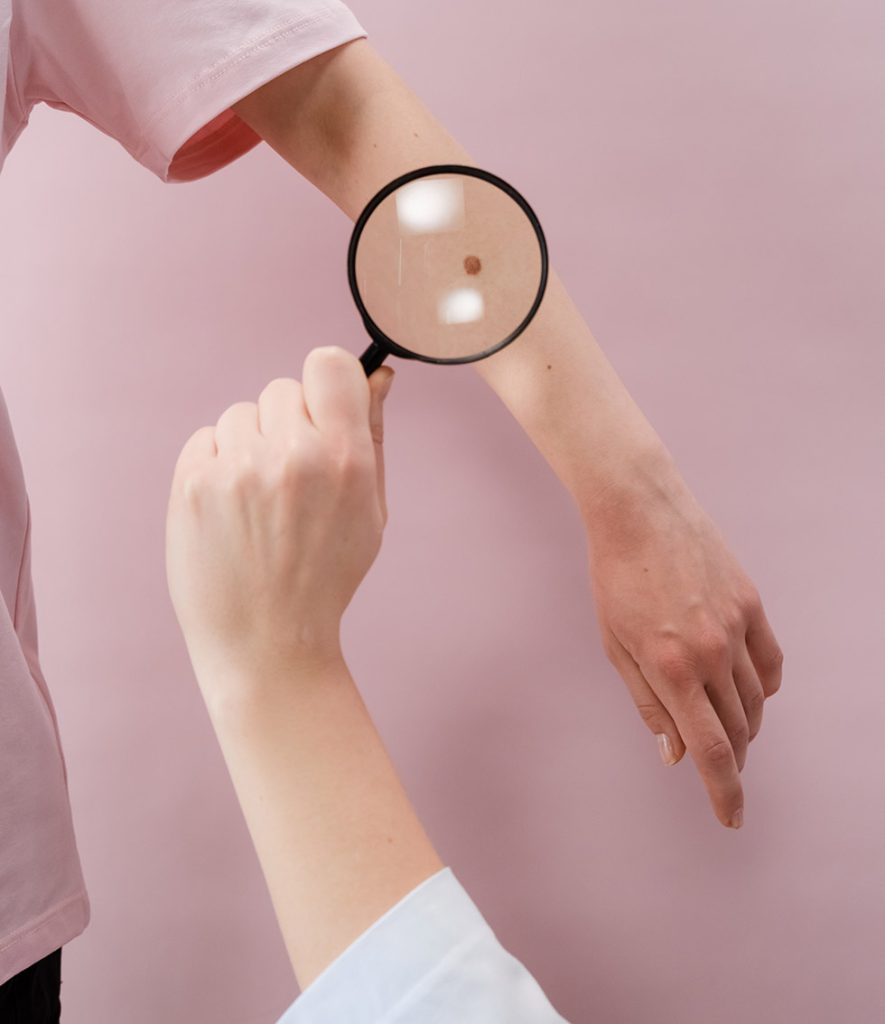Posted by: Skin And Cancer Institute in Uncategorized

We’re big fans of dermatologists here at the Skin and Cancer Institute for all the helpful things they do for their patients. From A-Z (acne to zits) to everything in between, a dermatologist keeps their patient’s largest organ—their skin—healthy.
What’s a Dermatologist?
A dermatologist is a medical doctor who’s specially trained to care for your skin. They take this responsibility seriously because the skin is your body’s first line of defense against the outside world and protects you from viruses, bacteria, and infection. Plus, it regulates your body temperature and cools you down when you become too hot. So, it makes sense that this important organ would have a doctor dedicated to keeping it healthy.
What Does a Dermatologist Do?
A dermatologist can diagnose and treat skin conditions as well as perform surgery. They also treat conditions that affect the hair, nails, and mucous membranes (the delicate tissue that lines your eyelids, nose, and mouth). Some dermatologists are trained to provide patients with cosmetic procedures like botox, fillers, and laser skin treatments.

What Can They Diagnose?
A dermatologist is trained to diagnose more than 3,000 skin conditions. Some are mild, while others can seriously affect your health. Acne and skin rashes and lesions are the most common conditions dermatologists diagnose. Other common conditions that dermatologists diagnose include skin cancer, hair loss, and nail problems.
How Long Does It Take To Become a Dermatologist?
It takes twelve years of study and practice to become a dermatologist. This starts with a bachelor’s degree and culminates in at least 12,000 hours spent treating patients in a residency program while working alongside experienced doctors. A dermatologist’s education breaks down like this:
- 4 years of college to earn a bachelor’s degree
- 4 years of medical school to earn a medical degree
- 1-year internship
- 3 years of a dermatology residency program
What Is a Board-Certified Dermatologist?
A dermatologist can become board-certified after completing a residency program and passing a challenging exam that tests their knowledge and skills. In addition, they’ve made a commitment to keep up with the latest dermatology advances. Look for the letters FAAD next to your dermatologist’s name. This means your dermatologist:
- Is board-certified
- Is a member of the American Academy of Dermatology
- Has rigorous education and training
- Keeps up with medical advances
Dermatologist Salary
Because of the high level of specialization and education, a dermatologist’s salary starts high and grows over the years. The average base salary for a dermatologist, according to Salary.com, is $356,000. This can vary by person and location, with higher wages concentrated in dense urban areas, especially along the coasts.
We’re big fans of dermatologists for keeping their patients’ largest organ healthy. From acne to skin cancer, a dermatologist can diagnose and treat more than 3,000 skin conditions. Preventative care is important so we recommend an annual skin checkup. Wondering what a dermatologist can do for you? Schedule your appointment today and come get your skin checked out.